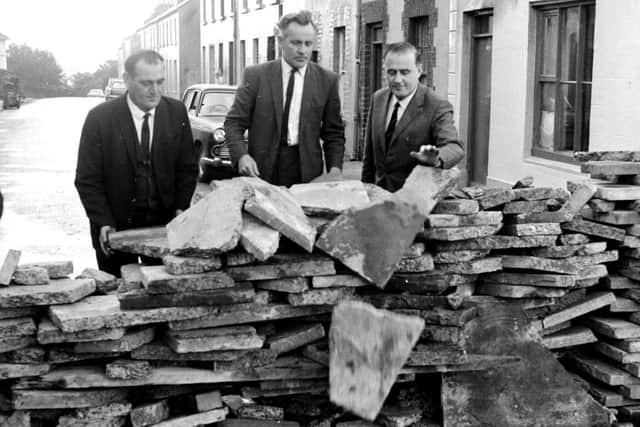Barricades finally come down and era of ‘No Go’ areas comes to an end


They were to be replaced with a white line to mark the boundary of the ‘No Go’ area.
As time passed, the Derry Citizens’ Defence Association (DCDA) - the de facto government of the ‘No Go’ area - came to believe the barricades were no longer necessary as the British Army wasn’t attempting to cross them, the RUC had been instructed to stay away from the area, and the political situation, in the main, seemed to be getting better.
Advertisement
Hide AdAdvertisement
Hide Ad‘Free Derry’ consisted of the Bogside, Brandywell and lower Creggan areas of the city and contained more than 30 barricades which were manned at all times.


The area housed approximately 35,000 people and was 1.5 squares miles in size.
In early September, with the Hunt Commission - which led to the reshaping of the RUC and the disbandment of the Ulster Special Constabulary - and the Scarman Tribunal, enquiring into events leading up to August 1969, both underway, many moderates in Derry became more inclined to take the barricades down.
However, the only concession the DCDA made was to modify the barriers to let vehicles through and they announced that the barricades would remain until there was “concrete evidence” of the reforms.
Advertisement
Hide AdAdvertisement
Hide AdOn September 7, about a week after British Home Secretary James Callaghan’s historic visit to the Bogside, 2,000 people turned up at an open-air public meeting held by the DCDA. The meeting agreed to maintain the barricades but to breach the main barrier in Rossville Street. Despite John Hume, the MP for Foyle, arguing that they needed to “maintain some form of symbolic barricade”, moderates were becoming less tolerant of Free Derry and of the political role the DCDA was playing. In effect, the DCDA was seen as usurping the role of Hume and political parties such as the Independent Organisation, the forerunner to the SDLP.
Historian Niall O’Dochartaigh - an expert on the Free Derry era - says that it was in these circumstances that the British Army began trying to undermine the authority of the DCDA by negotiating with other groups in the community.
Stymied in negotiations with the DCDA and pressurised by unionists, the army became more assertive.
On September 14, after much internal argument, the DCDA finally gave way to pressure from both the army and within the area and agreed to allow military personnel - ‘redcaps’ - into the area. The DCDA also took down half the barricades and, as negotiations speeded up, the barricades were replaced completely by a white line, a symbolic border suggested by Micheal Canavan and supported by John Hume and Paddy Doherty, a key figure in the DCDA.
Advertisement
Hide AdAdvertisement
Hide AdWithin a week, all the barricades had come down. However, although ‘redcaps’ could be called on for individual cases, the area was still being policed by the DCDA peace corps. It appears to have been at this point that Lt. Gen. Sir Ian Freeland, British Army GOC in NI, informed the DCDA that ‘redcaps’ and regular British troops would begin to patrol the area regardless of the views of the DCDA.
Thus, as the last barricades came down, the army issued a peremptory statement denying that they had struck a deal with the DCDA on the removal of the barricades.
Redcaps, it seemed, would now patrol the area in whatever way the army decided.
Following the publication of the Hunt Report in October, the DCDA announced its decision to stand down, content in the knowledge that it had successfully defended the Bogside and helped to introduce policing reforms.
Advertisement
Hide AdAdvertisement
Hide AdFollowing a visit to the Bogside, on October 11, 1969, by James Callaghan and the new RUC Chief Constable, Arthur Young, unarmed military police crossed the white lines on October 12, bringing an end to Free Derry’s ‘No Go’ area.